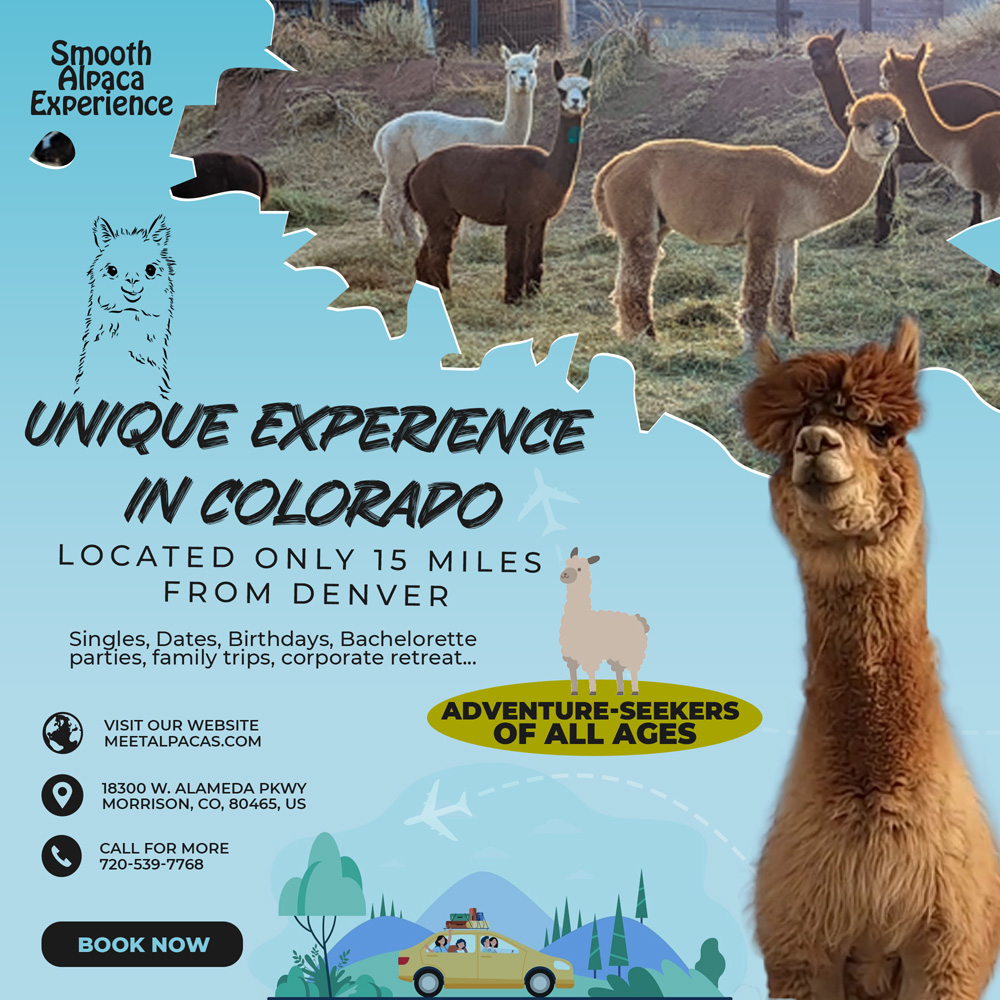Awesome alpaca adventure tours and holiday guides in Denver, Colorado: The best way to get a sense of how alpacas are cared for is to visit the farm. It is a unique and fun experience, and kids love it! They can help feed the animals, clean stalls, and fill water buckets. It is a great way to teach responsibility, and it teaches them that even the little things make a big difference. The farm also demonstrates the diversity of income opportunities that can come from owning livestock. The quality of the herd, the acreage required, and the amount of work needed can have an impact on overall income results. Read extra information on alpacas farm in Colorado.

Understanding the economics of alpaca farming before investing in these animals is important. It is also a good idea to engage an accountant or tax specialist for guidance in setting up bookkeeping systems and determining the appropriate deductibles and allowances to apply to your particular situation. Alpacas are herd animals, and they thrive in social environments. They are primarily herbivores and subsist on a diet of grasses and hay, so pasture management is an important part of their overall well-being. Regular health checkups, vaccinations, and shearing are other important aspects of their overall care.
Still, you should always remember to treat alpacas with space and respect. Alpacas don’t like being grabbed or held, and they are often particularly sensitive to being touched on the head. Instead, allow them to approach you at their own pace. This often results in a much more rewarding and affectionate response. If you’re looking for an age-appropriate experience for the entire family, you’ve met your match. Interacting with alpacas is safe for everyone from little kids to elderly members of your crew. There are no age restrictions — kids 2 and under are free.
Alpaca fur is a very prized fiber for artisans and crafters. Alpaca fur is very soft and does not retain water. It is also very durable. According to National Geographic, alpaca fur is the second strongest animal fiber, after mohair. Alpacas come in 22 colors, from a true, blue-black through browns and tans to white, according to Alpaca Ventures. Some Andean people eat alpaca meat. In Peru, it is often served in upscale restaurants. Alpacas don’t have teeth in the top-front of their mouths. This gives them the appearance of having an underbite.
Still, seeing alpacas on a ranch in what many consider to be a big city out West can be a bit mind-boggling. What is life like on the ranch? What does an alpaca eat? Do they run and play with each other? Are alpacas high maintenance and easy to care for? Get all your questions just like this (and more!) answered. Your expert guide will fill you in on what it’s like to live and work on an alpaca farm. It offers views of the gorgeous surrounding areas : Do you want to see Colorado mountain views without needing to hike? Whether you’re traveling with a large group, have small children in tow, or just don’t like hiking, this experience will allow you to take in scenic mountain views in a unique way. Are you looking for an educational opportunity for your kids? Come enjoy an alpaca experience that’s not only fun but also informative. This alpaca experience takes place on a fiber farm. This type of farm raises animals like alpacas, sheep, goats, llamas, angora rabbits, and more for their fleece and wool.
What is an alpaca? Alpacas (vicugña pacos) are members of the Camelid Family and are a domesticated species of the South American camelid. Camelids originated in North America over 40 million years ago. Camels migrated east via the Bering Strait and llamas migrated to South America. Today there are five recognized camelids breeds: camels, llamas, guanacos, alpacas, and vicunas. They vary by size and purpose, some being used primarily as pack animals and others valued for their fiber. All are used in a secondary meat market. Camels, llamas, and alpacas have been domesticated for thousands of years, whereas guanacos and vicunas continue to roam freely in herds. Many people are familiar with humped camels: the dromedary of Northern Africa, the Middle East, and Southern Asia, and the Bactrian camel of China and Tibet. Next in size is the llama (domesticated guanaco), followed by the alpaca (domesticated vicuna). See additional info on https://meetalpacas.com/.
Is it OK to have just one alpaca? No. Alpacas have very strong herd instincts and need the companionship of other alpacas to thrive, preferably three or more. Alpacas are livestock, and should not be treated as house pets. Alpacas should be kept with their own sex with a few exceptions. One exception is that male crias need to be kept with their mothers until weaning. Gelded males should not be housed together with females, as they can repeatedly attempt to breed the females. This can lead to serious health consequences for the females.
So what do you DO with these animals? Alpacas are raised for their soft and luxurious fleece (fiber). Each shearing produces roughly five to ten pounds of fleece per animal, per year. This fleece, often compared to cashmere, can be turned into a wide array of products from yarn and apparel to tapestries and blankets. The fleece itself is recognized globally for its fineness, softness, light weight, durability, excellent thermal qualities, and luster.
Alpacas are very social creatures. They are gentle and curious and with training can become great pets, according to Switzer. Herds often include animals of different species or taxonomic families, such as llamas, goats and sheep, according to the FAO. Alpacas spit when they are distressed or feel threatened. They will sometimes spit at each other when they are competing for food or trying to establish dominance, according to Switzer. They won’t spit at people or bite unless they have been abused.